Art World
In an Age of Political Division and Dirty Money, Can Museum Boards Ever Be Immaculate? Some Think They Have Found a Solution
From coast to coast, museum boards are being asked to answer for the source of their fortunes. What happens next?
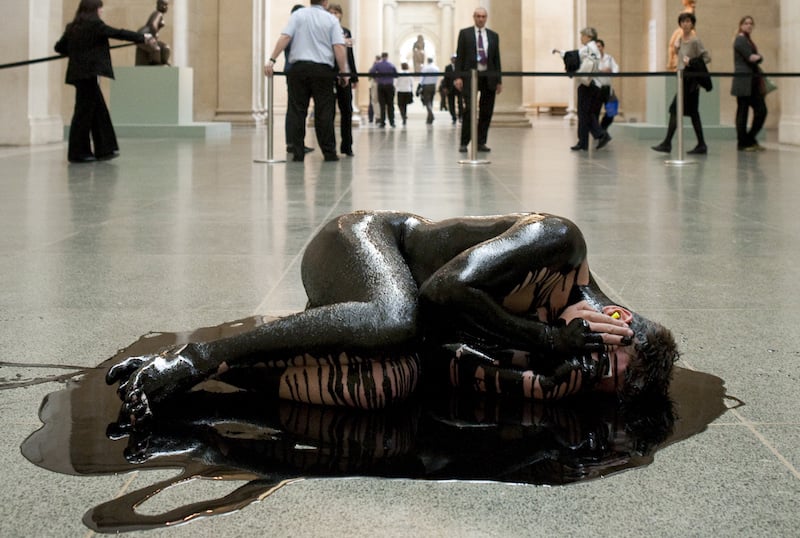
From coast to coast, museum boards are being asked to answer for the source of their fortunes. What happens next?

Julia Halperin

When academics look back, it’s possible that 2019 will be remembered as an inflection point in the history of museums and their relationship to money. Over the past nine months, major art institutions—and more specifically the people who fund and run them—have come under unprecedented scrutiny.
Earlier this spring, demonstrators targeted the Whitney Museum of American Art in New York for protests on consecutive Fridays for nine straight weeks, calling for the resignation of Warren Kanders, the museum’s board vice chairman and CEO of Safariland, a defense manufacturer that has sold tear gas used on migrants at the US-Mexico border. And in London last month, Yana Peel, the director of the Serpentine Galleries, resigned after a Guardian report (which she disputes) linked her to a cybersecurity firm that has been accused of spying on journalists and activists. Similar criticisms have been levied at the investments of board members at the Museum of Modern Art in New York, the San Francisco Museum of Modern Art, and other art institutions, calling into question their ethical propriety.
With no industrywide guidelines to help them navigate this new era, board and staff members alike are flailing. When is money too dirty to accept? What if you’ve already accepted it? Does it matter if the funding source was uncontroversial at the time? Is there any way out of this mess?
Some in the museum field think they have found one. The answer, advocates say, is to open the hood of museums and rewire their internal structure so that board members have less power and other community stakeholders have more. Such a proposal may not be extreme enough to please those on one side of this debate, and too profound for those on the other. It also might be entirely impractical. But the fact that it is being seriously discussed reveals just how deeply these criticisms are rattling the foundations of museums, raising existential questions about their very structures.
That board members are attracting scrutiny is nothing new. Back in 1969, members of a newly formed art collective called the Guerrilla Art Action Group infiltrated MoMA’s lobby with bags of bull blood under their clothes and wrestled with one another until the bags burst, leaving their bodies covered in blood. The goal was to call attention to then-MoMA trustee Nelson Rockefeller’s ties to a manufacturer of weapons being used in the Vietnam War. (Sound familiar?) But now, unlike 50 years ago, such information and imagery can be disseminated around the globe with the tap of a screen. And that makes it a lot harder to ignore.
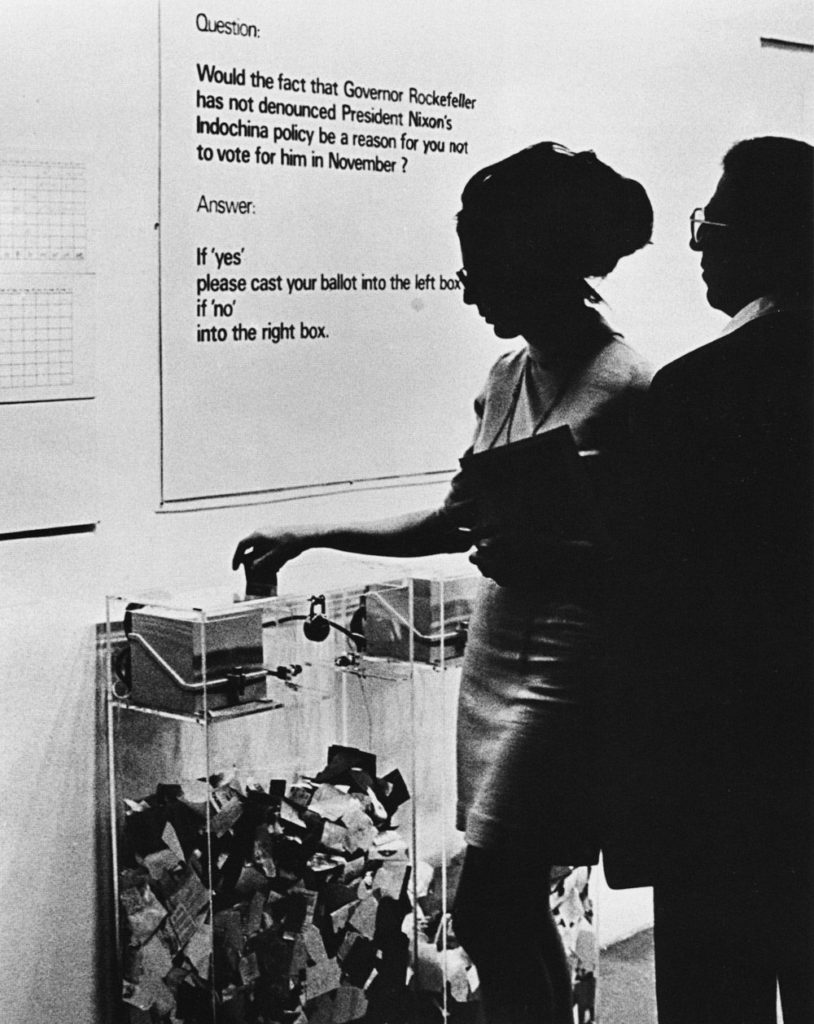
Hans Haacke, MoMA Poll (1970). Courtesy of the Museum of Modern Art.
This added exposure just serves to highlight a problem that has always existed at the core of museums, which is that, in the current paradigm, boards serve two roles. First, they act as the institution’s primary governing body. Second, they act as an increasingly crucial source of funding. (Board members must often give six-figure gifts to their institution annually to retain their positions; with the decline of corporate and government funding, those contributions have become ever more vital.)
In other words, board members are both Wall Street and the regulators—tasked with policing the institution they steward and their own stewardship at the same time. “Those two pressures are in conflict,” says Adrian Ellis, the CEO of AEA Consulting. “It’s the dilemma at the heart of the model.”
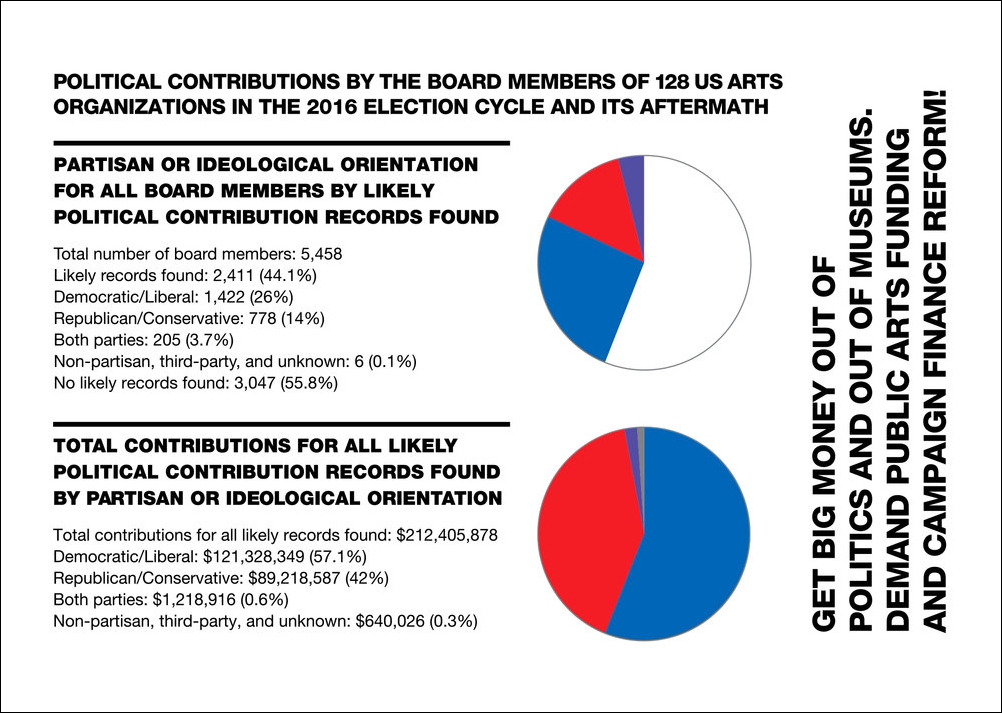
Andrea Fraser’s postcard for SuperPak, by Artists4Democracy, based on her 2016 book Museums, Money, and Politics.
In the wake of the 2016 US elections, the artist Andrea Fraser published 2016: in Museums, Money, and Politics, a thorough accounting of the partisan donations of board members at museums across the country. That project, she wrote, “developed out of my personal sense of horror at discovering supporters of radical right-wing politicians serving on the boards of arts organizations with which I work and whose missions are directly threatened by the policies these politicians advance.”
When it comes to the new sharpened focus on museum boards, she now offers a proposition: Why not separate the governance from the funding?
There is no good reason, in Fraser’s estimation, that those tasked with governing the institution have to be the ones who fund it. She envisions a scenario in which board members would no longer be required to contribute a set amount of their own money. This core group, then, would be augmented by councils with representatives from museum staff, community members, and artists, who might also be represented on the board or an oversight committee tasked with policing the board’s decisions and pushing them on critical issues.
“It’s a vision for institutional reform that’s basically about democratizing governance within institutions,” she says. “It seems a lot more realistic than starting out by completely transforming the financial basis of museums.”
Such a shift, she says, would also make museums more aligned with other fields, like medicine, science, social services, and education, where board members are selected based on professional expertise, scholarship, and their ability to further the institution’s mission. “The arts appear to be at the extreme of prioritizing wealth over all other criteria,” she notes. “It is easy to see how major decisions like the hiring of directors and architects are impacted in many museums by the lack of a range of stakeholders on boards.”
In a similar vein, the photographer Nan Goldin—who has been leading the charge against the Sackler family’s museum funding due to their role in the opioid crisis—and the artist Hito Steyerl are currently working together to develop their own ethics guidelines for museum boards.
Some museums have already incorporated elements of this more representative model, and Fraser herself serves on the artist council at the Hammer Museum in Los Angeles. Plenty of institutions already have artists and representatives of community organizations on their boards, some of whom are not required to make the same financial contribution as their peers. And large institutions often have governance committees, oversight committees, development committees, and other groups tasked with addressing potential conflicts and assessing incoming gifts.
But usually, artists and community representatives are far outnumbered on boards and subcommittees, making their influence limited to sounding a note of caution. What’s more, most boards do not have established mechanisms in place to remove board members. Under the current system, any process by which a museum might remove a board member would need to first be written, voted on, and adopted by the board members themselves.
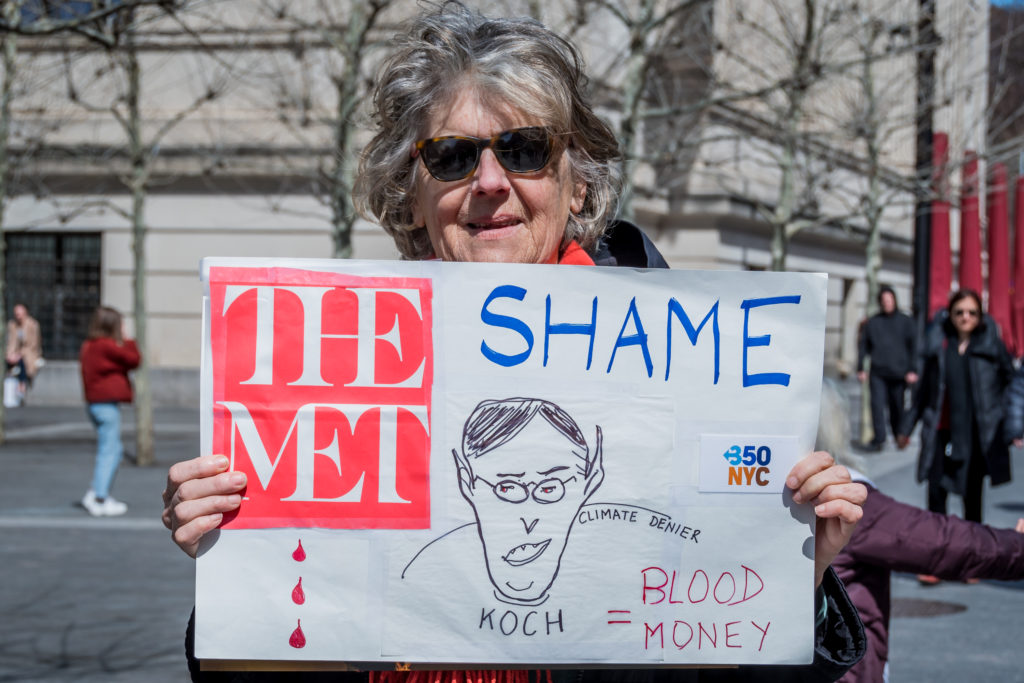
Activists from Rise and Resist, at the Koch Plaza outside the Metropolitan Museum of Art in NYC to call for a massive global response and urgent action to end our climate emergency and demanding the rejection of climate denial and delay. (Photo by Erik McGregor/Pacific Press/LightRocket via Getty Images)
“This question of how we share power with the disenfranchised, that’s the hardest part,” says Mary Ceruti, the director of the Walker Art Center. “By trying to bring constituents into the governance of institutions, it does require people to give something up.”
As for where the money would come from if funding is not a requirement for sitting on the board, that remains an open question, since people who give money to museums often do so in large part because of the cultural cachet and influence that comes with steering an art institution. How many wealthy tycoons would be content giving millions of dollars to a museum and then sitting back and watching a group of artists and community members decide how to spend it?
Still, Ceruti says she is open to reconsidering the way the museum governs itself—and she thinks others in positions of influence might be, too. “I’m trying to figure that out,” she says. “There are, I think, lots of donors that are happy not to have the governance responsibility if we have a compelling vision for how the community and the institution are both better served and have a way to recognize and value their contributions in a way that’s real.”
But even if museums were able to introduce a new layer of bureaucracy that managed to hold their leaders accountable without drying up funds and slowing day-to-day business to a halt, such a system would likely create problems of its own.
First, there is the inescapable fact that many great fortunes in this country—including those of the robber barons who established institutions like the Frick Collection and the Morgan Library—were built on exploitation. Looking back on America’s great philanthropists, “who doesn’t have unclean hands?” asks collector Howard Rachofsky, a member of the board of the Dallas Museum of Art and the Dia Art Foundation.
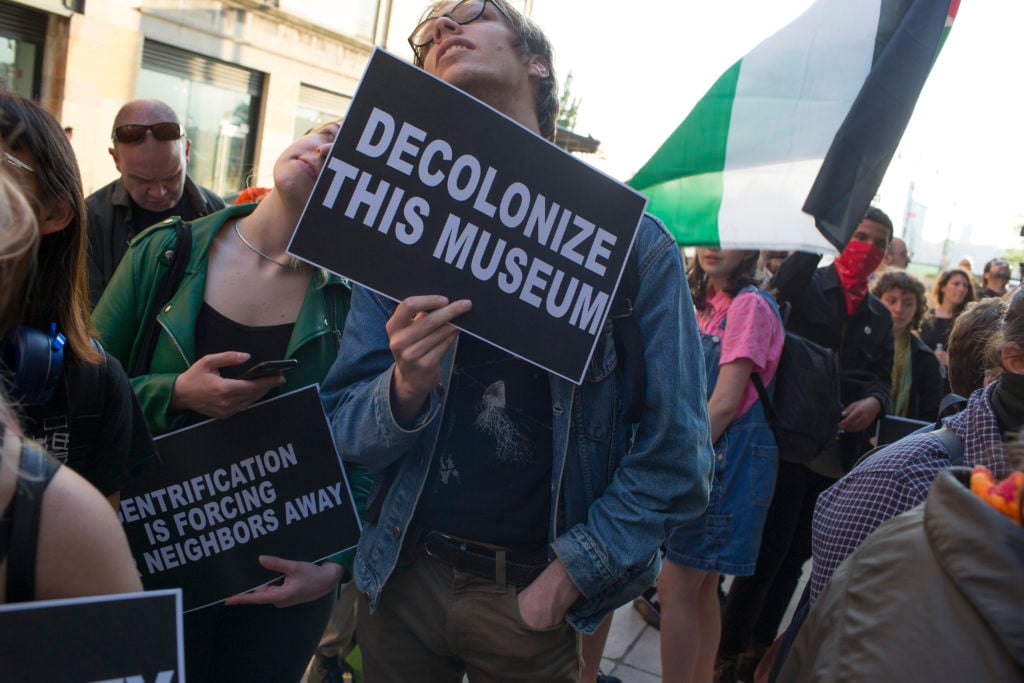
Protestors call for Warren Kanders’s resignation outside the Whitney in New York City. (Photo by Andrew Lichtenstein/Corbis via Getty Images)
If museums were to forensically examine the investments of every donor, some wonder, would there be any suitable candidates left standing? Is it feasible or even desirable to ask “disenfranchised communities” to devote time to the governance of their local museum? And who is to say a more diverse and representative board would make a decision that would be any less divisive than those being made now? Finally, does splitting museum governance from finance even answer the protests of those who want museums to separate themselves from controversial individuals, period?
“If you really believe that the culture has a place in the world and you want to help fund it, I think we should err on the side of not blaming people for the source of those funds, because for the most part, if you go back far enough, you can find skeletons in closets, even if they are inadvertent,” Rachofsky argues. “It’s hard enough to raise money and balance the budget if you’ll take it from anyone.”

Robert Mapplethorpe’s self-portrait during a protest at the Corcoran Gallery of Art in 1989 (Photo by Carol Guzy/The Washington Post via Getty Images)
Meanwhile, some fear the increasing scrutiny will inevitably scare off even so-called “clean” donors. In a statement following her departure from the Serpentine, Yana Peel said ominously: “If campaigns of this type continue, the treasures of the art community—which are so fundamental to our society—risk an erosion of private support. That will be a great loss for everyone.”
Adrian Ellis agrees that this more exacting litmus test for donor virtue, whether it comes from within or outside the institution, will inevitably act as a deterrent. “In the event that people are in positions in the charitable world are subject to detailed scrutiny of their financial circumstances, shareholding, how they gain their wealth, et cetera, then it will probably be an increasingly unattractive thing to serve in that role. That’s not a form of scrutiny, whether it’s warranted or not, that is comfortable.”
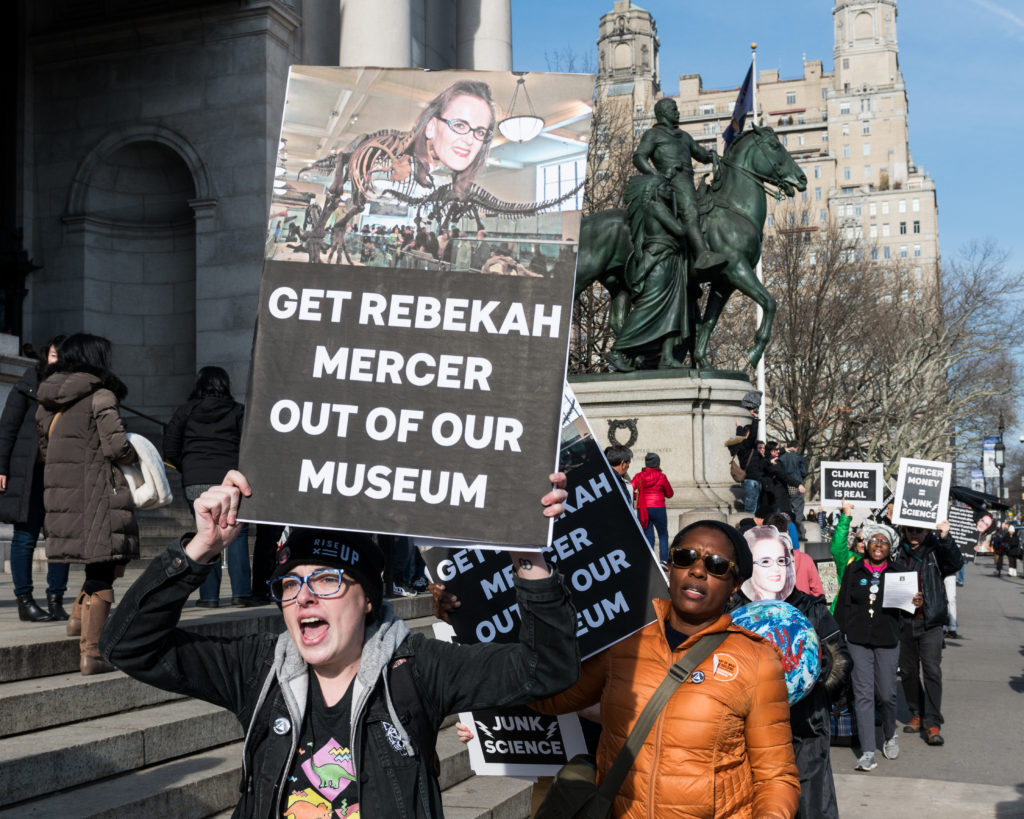
Protests against Mercer being a member of the Board of Trustees of the American Museum of Natural History. Photo by Michael Brochstein/SOPA Images/LightRocket via Getty Images.
For some, this kind of erosion in private support is acceptable if it means that art institutions no longer launder the reputations of those actively profiting from other people’s pain.
“There seems to be a belief that if the Whitney doesn’t get money and it doesn’t exist, that’s worse off for all of us,” says Amin Husain, a member of Decolonize This Place, which has led the protests against Warren Kanders. “That’s not true. That statement only includes the people who are benefiting from it. It doesn’t include our people.”
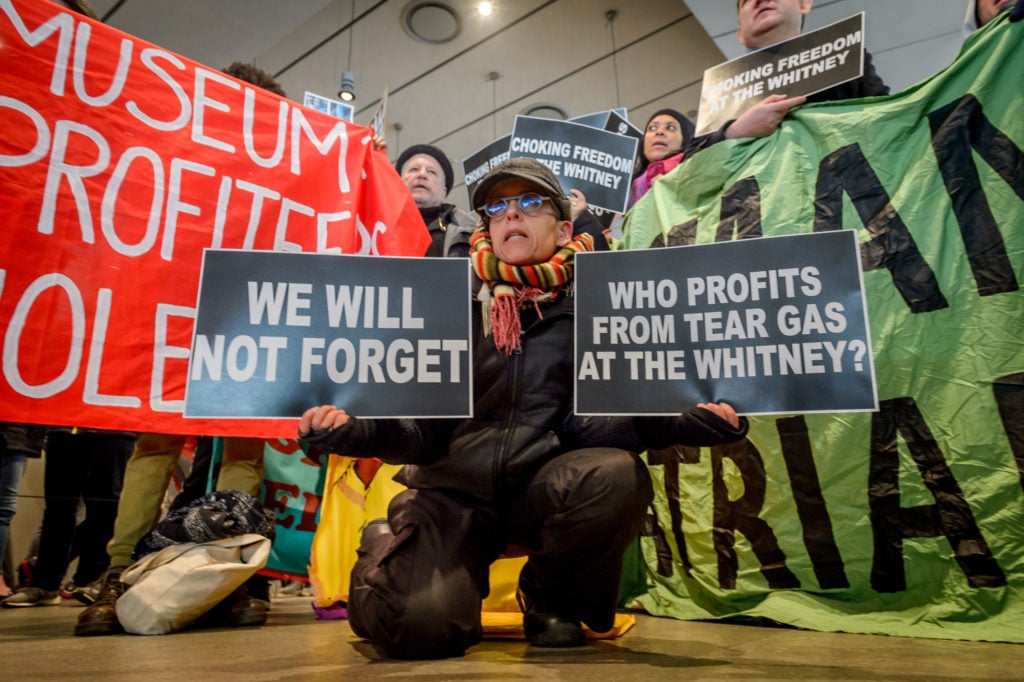
Activists took over the lobby at the Whitney to protest Warren B. Kanders. (Photo by Erik McGregor/Pacific Press/LightRocket via Getty Images)
But others maintain that eliminating the Whitney, or even ridding all boards of bad actors, will not fix the essential issue at hand, which trickles down into the groundwater of society. “The fundamental problem is a system that ascribes to people with wealth a kind of entitlement to leadership and authority,” Fraser says.
“You see it every day in museums—that kind of reinforcement of that type of entitlement, that ingratiation,” she continues. “It’s what we perform every day. And it reinforces a set of assumptions that underlies our society across the board: that along with wealth comes an entitlement to governance and leadership. And that is fundamentally what I think is damaging to our society.”